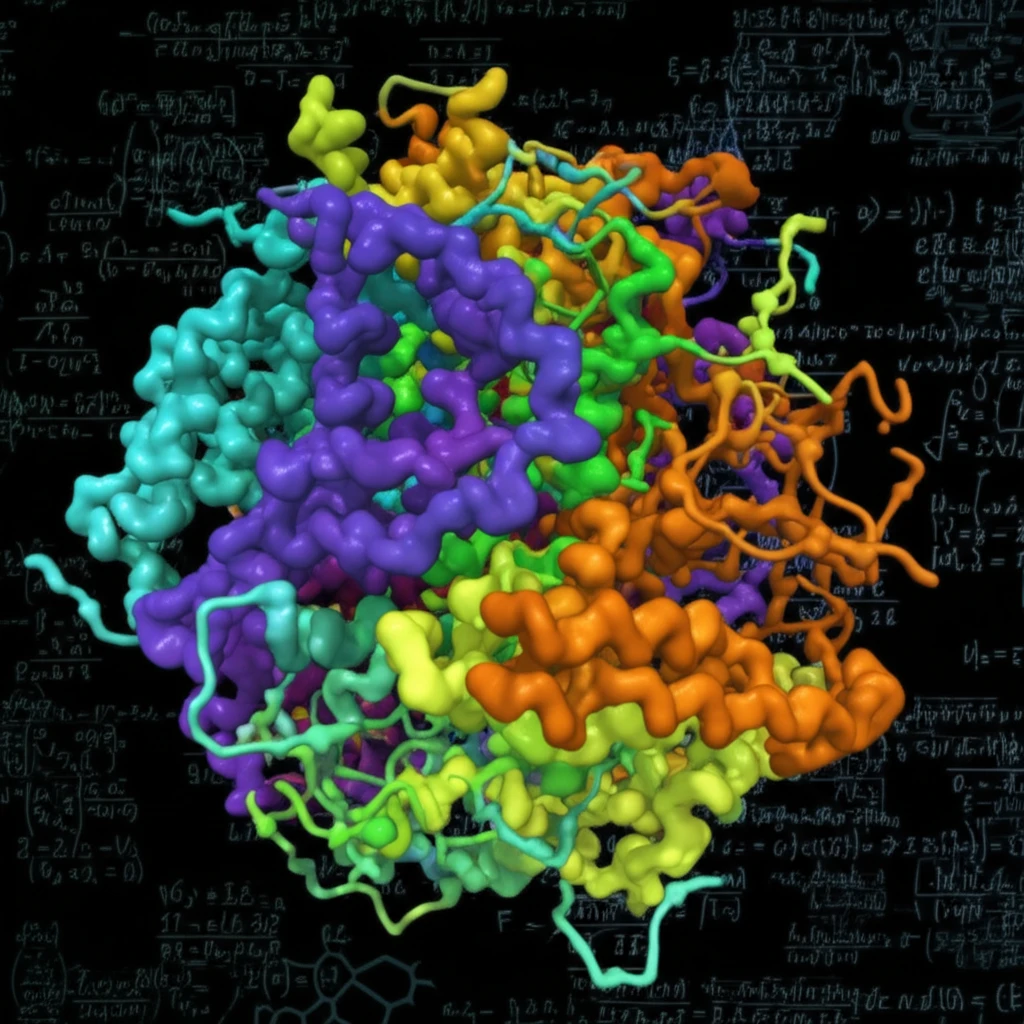
Unlocking Life's Secrets: How Polymer Physics Could Revolutionize Protein Folding Understanding
"A fresh look at protein structures, moving beyond traditional biochemistry to reveal the simplicity underlying complex biological processes."
The intricate dance of protein folding—how a linear chain of amino acids transforms into a functional three-dimensional structure—has long puzzled scientists. Traditional approaches often involve complex biochemical interactions, yet a groundbreaking paper is changing the game. Published in 'Proteins: Structure, Function, and Bioinformatics,' Škrbić et al.’s work introduces a novel phase of matter that simplifies this complexity. This article delves into how their innovative model is reframing our understanding of this fundamental biological process.
At the heart of this shift is the idea that protein folding can be understood through the lens of polymer physics, reducing the need to account for every single biochemical interaction. This perspective harkens back to Erwin Schrödinger's 1944 book, 'What is Life?', which probed the physical basis of living organisms. While Schrödinger's work laid the groundwork, Škrbić et al. bring modern polymer physics to bear on the protein folding problem, suggesting that the process may be governed by simpler, more universal principles than previously thought.
This new model offers a refreshing departure from conventional wisdom. For decades, scientists believed that a multitude of protein-specific interactions were responsible for guiding proteins to their native states. Škrbić et al.'s model challenges this view, proposing that basic geometrical constraints and polymer behaviors play a crucial role. As we explore this model, consider how it not only simplifies protein folding but also opens new avenues for understanding and manipulating biological systems.
The Elixir Phase: A New Perspective on Protein Folding

Škrbić et al. introduce the concept of the 'elixir phase,' a novel phase of matter 'nestled among other phases,' where multiple ground states are composed of building blocks resembling protein native folds. This phase suggests that proteins naturally tend towards specific structures due to inherent physical properties, rather than solely relying on complex biochemical interactions. This idea provides a fresh perspective, allowing researchers to view protein folding as a more predictable and less chaotic process.
- Simplicity in Complexity: The model defines a small set of geometrical constraints that guide the folding of linear polymer chains.
- Basic Building Blocks: It consists of a semi-flexible backbone of beads with identical side chain beads, connected by specific center-to-center distances.
- Energy Considerations: Favorable energy is assigned based on the proximity of backbone beads, with side chain beads serving to exclude volume through steric interactions.
The Future of Protein Research
The model proposed by Škrbić et al. not only simplifies the understanding of protein folding but also paves the way for future research. By demonstrating that structure is almost unavoidable and limited in scope under certain conditions, the model suggests that a compatible landscape precedes the onset of folding events. This could revolutionize how scientists approach protein design and manipulation. As physical chemistry continues to break down complex phenomena into simpler, more understandable models, 'the elixir phase of chain molecules' stands as a significant step forward, offering both clarity and new possibilities in the field.
